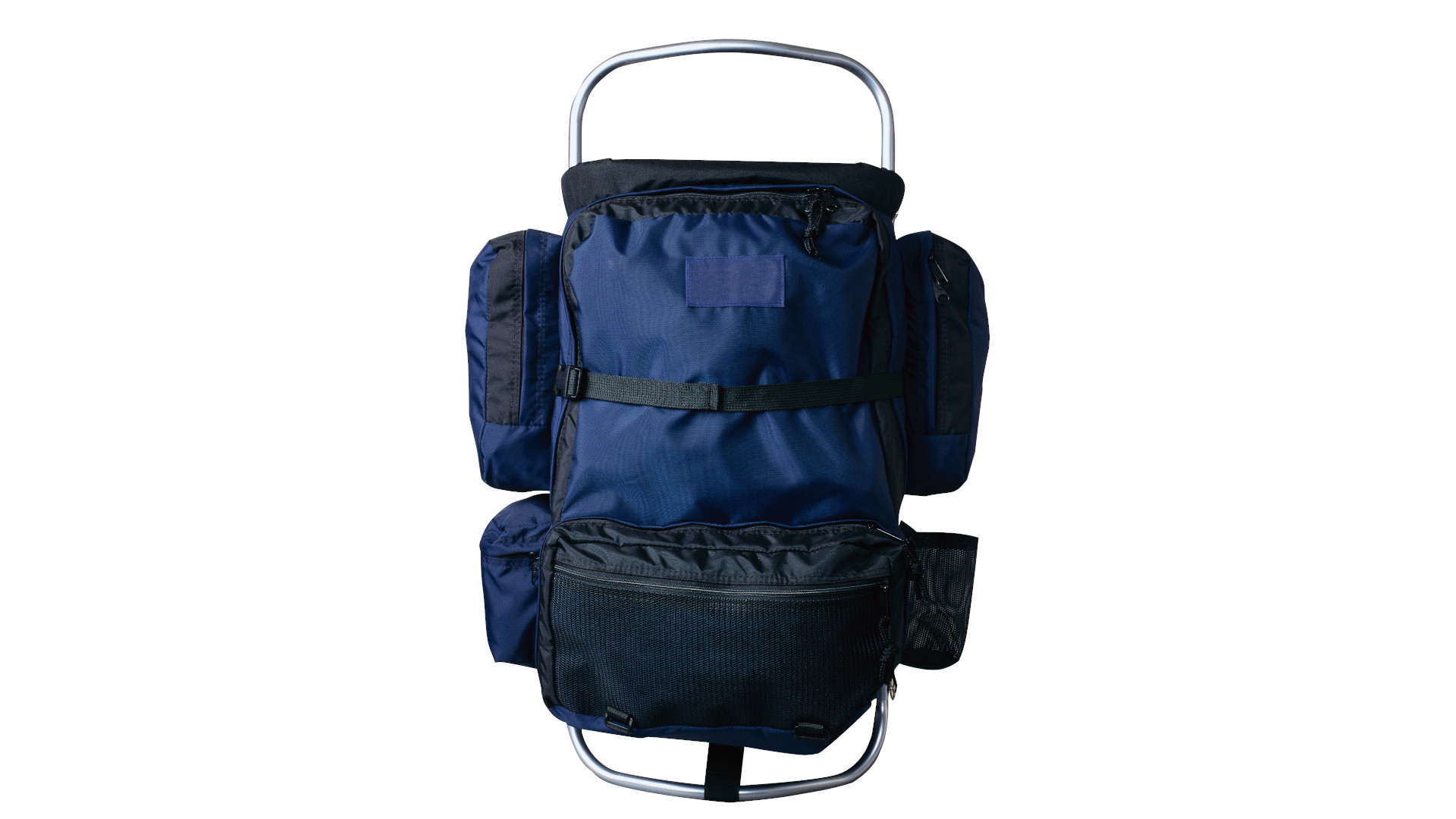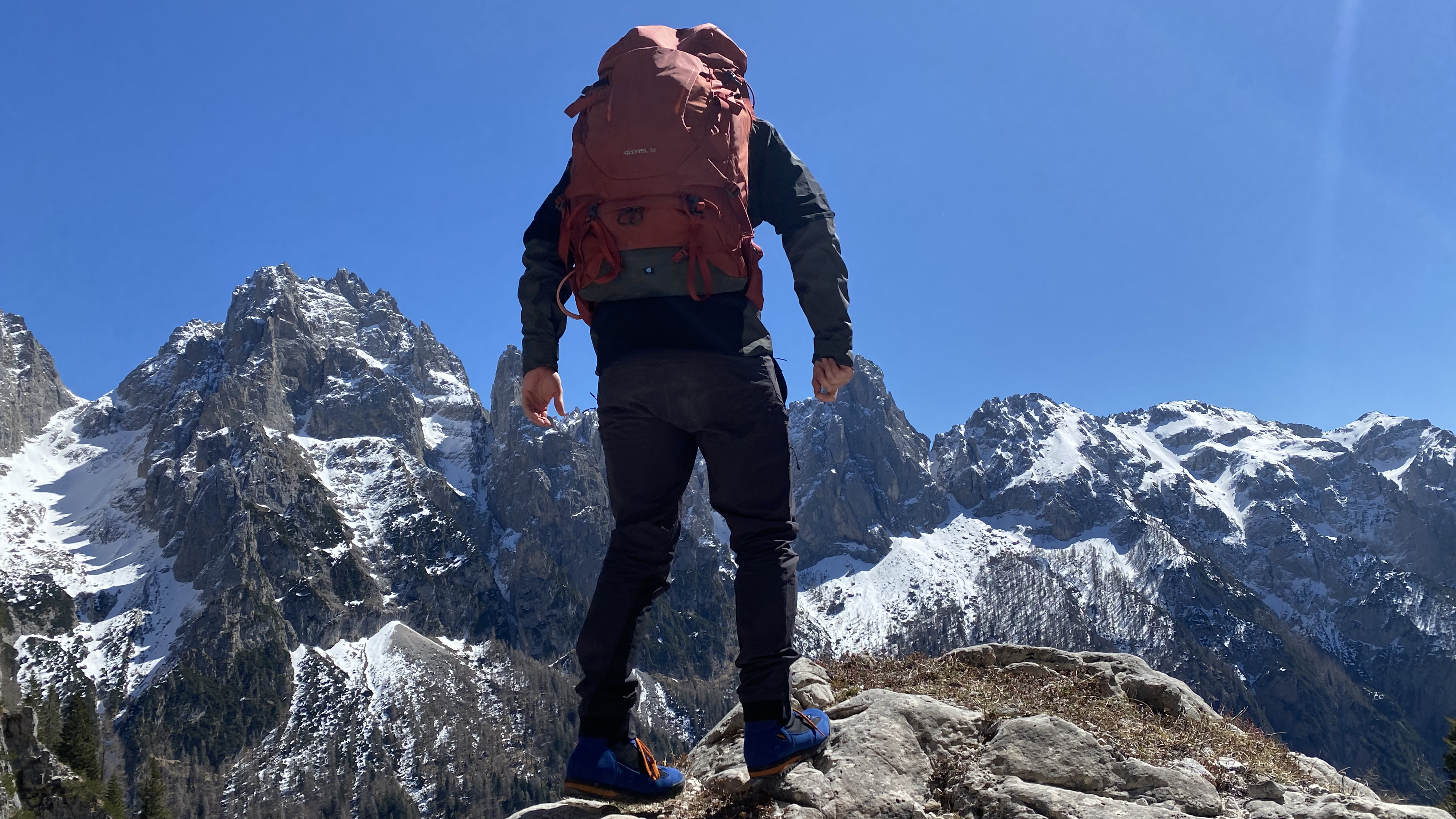
It used to be that external frame backpacks were the hallmark of an adventurous spirit. Young travelers trekking across a continent and seasoned thru-hikers explored the globe on foot with their giant packs sitting high, with foam sleeping pads and their best hiking boots lashed to the metal frames. But with the advent of internal frame backpacks, which use concealed frames that curve against your back, most hikers have surrendered their bulkier external frames for something more lightweight and compact.
We're here with our expert guide when it comes to external frame backpacks vs internal frame backpacks. We've tested our fair share of both over the years and in this feature we break down the benefits, considering weight, storage, comfort, durability and price.
Let's get into it, starting with an brief overview of what you can expect from both:

Meet the expert
Today's best deals
What is an external frame backpack?
An external frame backpack sports its supportive frame on the exterior of the pack. They're excellent at transferring the load to the lower body and the weight is positioned higher up, enabling you to hike comfortably. The frame typically sits away from the wearer's body, increasing insulation. Another advantage is the ability to attach gear directly to the frame.
What's the current trend when it comes to backpacks?
- Internal frame backpacks dominate the market these days
- It's still possible to buy external frame packs though

Internal frame backpacks now dominate the market, as well as our list of the best hiking backpacks, and have become increasingly versatile and technical so therefore might seem like an obvious choice for your next hike. However, there are a few brands out there that are still investing in external frame styles, and a surprising number of hikers still seeking them out. For example, we recently reviewed the marvellous Fjällräven Kajka 55 backpack, which features a partly external birch wood frame and was wonderfully comfortable on the trails.
So, we decided to take a closer look at the pros and cons of external frame backpacks vs internal to see if there’s a good argument for resurrecting the old beasts.
Does anyone still use external frame backpacks?
- External frame backpacks are very rare these days
- Brands like Kelty, Mystery Ranch and Vargo still sell some
- You can buy used external frame packs on eBay and Amazon

Good question. Though external frame backpacks haven’t quite gone the way of the dinosaur (or of wearing cotton on hikes), they’re certainly a rare breed on the trails these days. Some hikers do still use them, perhaps out of nostalgia or a love of the retro vibe, but it also does give you a clue as to their durability.
That said, most of the big hiking backpack brands aren’t turning out a lot of external frame packs these days. Kelty still makes its legendary Trekker 65 and sells a frame that you can attach your own pack or duffel to, Mystery Ranch stocks its Terraframe 65 and Vargo has the Exoti AR2, Bog and 50, all made with titanium frames.
Beyond that, you’re probably looking at a US military backpack like the Alice Pack or Molle II. Unless you’re willing to do quite a bit of scouring of the web, your best bet is to pick up a used one, or check out Amazon where a few brands seem to be selling off their last remaining external frame packs.
We’ve no way of knowing if backpack brands will make a U-turn in this regard, but with the advent of lighter external frames it’s definitely possible. However, whether you’re keen on picking up an external frame backpack, or curious about whether you finally need to upgrade to a more modern bag, here are the criteria you need to consider:
Weight and size
- Classic external frame packs are heavier
- Vargo’s Exoti AR2 is relatively light, at 2lb 12oz
- Internal frame packs are more packable and less bulky
One of the big reasons hikers were so quick to shed their external frame packs when internal frames came on the market was the number of pounds that went with it. Classic external frame packs added at least 5lb to your load, and that holds true for the Kelty Trekker 65 and Mystery Ranch Terraframe, while today’s ultralight backpacking packs like the Osprey Levity 45 weigh in at a featherlight 1lb 12oz. That’s a huge difference when you’re walking for miles, but before you throw in the towel on external frames, Vargo’s investment in titanium frames means their Exoti AR2 comes in at a very acceptable 2lb 12oz so if you are in the market for a new external frame, you’re not necessarily committing to a heavyweight plod.
The bulkiness of external frames compared to internal is another factor to consider. Internal frames are more compact, sleek and frankly squishy, allowing you to more easily stow them in the overhead lockers when you’re flying with camping gear, whereas the nature of the external frame makes the classic pack a little more unyielding.
Storage and load
- External frame packs have more usable pockets and you can tether gear to the frame
- However, gear secured outside the pack is exposed to the elements
- Internal frame packs often come with straps for lashing gear
- An external frame is preferable if carrying very heavy loads

Obviously in addition to weight, an important factor is how much gear can your backpack hold? In this regard, an external frame with a capacity of 65L is going to fit the same amount of gear as an internal frame with the same capacity. However, external frames tend to have a lot more usable pockets and the frame gives you a lot of real estate to securely fasten gear like your best sleeping bag to the outside of the pack. This leaves more internal space for stowage, but of course having your gear outside your pack leaves it exposed to the elements and sharp branches.
In comparison, the sleek design of internal frame packs means less pockets (and often less usable pockets), though they often have a couple of straps for lashing gear.
The robust frame of an external pack is meant to carry heavy loads, which might wear down the seams and straps of an internal frame pack more quickly, but with camping gear becoming ever more lightweight, this may soon cease to be a factor. However, if you are still hiking with heavy loads, an external frame is the way to go.
Fit and comfort
- External frame packs sit away from the back, allowing good ventilation
- External frame packs move around more, not ideal for technical ground
- Internal frame packs move along with you better and are easier to adjust
- Internal frame packs sit snugly to your back but provide less ventilation

External frame backpacks sit away from your back and up quite high, making for quite a comfortable fit for walking upright while transferring the load onto your hips and legs. The gap between the pack and your back also allows for ventilation, which means you and the pack don’t get as sweaty. However, they traditionally haven’t been as easy to adjust, meaning you need to find one that’s a really good fit for you, but again, the newer Vargo ones offer lots of adjustability. They also move around more on your back, so they’re less stable for technical hikes and scrambling.
Internal frame backpacks are usually contoured and are designed to fit flush against against your back, so they’re preferred for those more technical hikes because they don’t move around so much when you do. They sit lower than an external frame pack, though, which means you tend to have to lean forward to counter the weight, which isn’t as comfortable on long treks. It's usually quite easy to adjust a backpack with an internal frame to accommodate your body proportions, but of course being snug against your back means they – and you – get sweaty.
Durability
- As the external frame takes the weight, these packs are very durable
- Internal frame packs aren’t as durable as the weight is transferred more to seams and straps

As someone who likes to move fast and light, I prefer an internal frame. However, if I was setting out on a two-week backpacking expedition, I'd certainly consider an external frame option.
Alex Foxfield, Advnture contributor
Obviously quality has a lot to do with the durability of any gear, but external frames are arguably more durable because the frame takes the weight, rather than the seams and straps, whereas an internal frame pack might fray at the edges more quickly. You can also keep the external frame of your backpack and replace the canvas with a new bag or duffel, which you can’t really replicate with an internal frame. With either option, the key is to invest in a good quality backpack, and take good care of it, really.
Price and options
- Little difference in price between internal and external frame packs
- You can get excellent deals of external frame packs though
- There are many more options when it comes to internal frame packs
Often, when a piece of gear is becoming extinct, it will be cheaper than its more state-of-the-art counterpart, but we found little difference between current external and internal frame packs. The external frame packs we found on the market were up there with the best internal frame packs in terms of pricing and while extremely technical internal frames can get really expensive, there are lots of affordable options out there. That said, because there’s a good chance you’ll be buying your external frame pack used or one of the last remaining available through a third party, you can get some really good deals.
In terms of options, internal frame backpacks are the clear winner – the world is your oyster when shopping for an internal frame backpack, whereas there are currently far fewer choices when it comes to external frame backpacks.
The verdict
- Internal frame packs better for portability and use on technical trails
- External frame packs are well suited to carrying heavy loads over long distances
Needless to say, if you’re in the market a new backpack, it’s going to be easier to get your hands on an internal frame backpack. If you’re looking for something lightweight that you can haul on and off planes and carry up narrow, technical slopes, an internal frame backpack is a no-brainer.
But external frame backpacks are getting lighter and they do make a lot of sense if you’re looking for something where you want to walk a long way with good posture, and don’t like getting sweaty while you do it. They’re a little trickier to get your hands on, so you kind of have to really want one to make it worth the hunt, but if you still own one, don’t send it to the recycling plant just yet – these sturdy haulers are great for heavy loads and hold up to the test of time.







